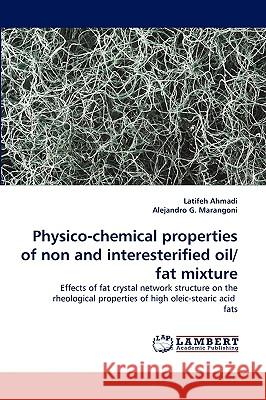Physico-chemical properties of non and interesterified oil/fat mixture » książka
Physico-chemical properties of non and interesterified oil/fat mixture
ISBN-13: 9783838334141 / Angielski / Miękka / 2010 / 160 str.
Fats and oils are multi-component systems. To understand their functionality, combinations of physical and chemical analyses of the fat and oil have to be conducted. The rationale for the study of such systems is based on the potential for two methods of interesterification to produce different positional distributions of fatty acids which, in turn, create fats with different functionality. This study is timely in that interesterified fully hydrogenated fats and oleic acid rich blends are being considered as alternatives to hydrogenation to create partially solid fats with particular physical properties and improved nutritional characteristics. Knowledge of the physical and chemical characteristics of these mixtures could help the food industry in making informed choices with respect to their selection of trans fatty acid (TFA) replacement fats.
Fats and oils are multi-component systems. To understand their functionality, combinations of physical and chemical analyses of the fat and oil have to be conducted. The rationale for the study of such systems is based on the potential for two methods of interesterification to produce different positional distributions of fatty acids which, in turn, create fats with different functionality. This study is timely in that interesterified fully hydrogenated fats and oleic acid rich blends are being considered as alternatives to hydrogenation to create partially solid fats with particular physical properties and improved nutritional characteristics. Knowledge of the physical and chemical characteristics of these mixtures could help the food industry in making informed choices with respect to their selection of trans fatty acid (TFA) replacement fats.











